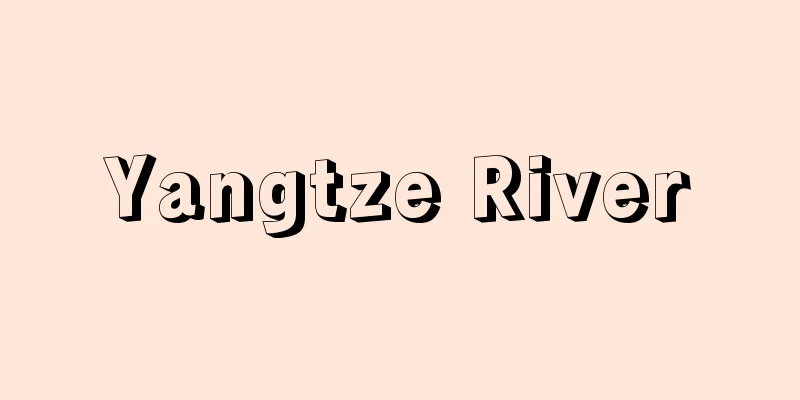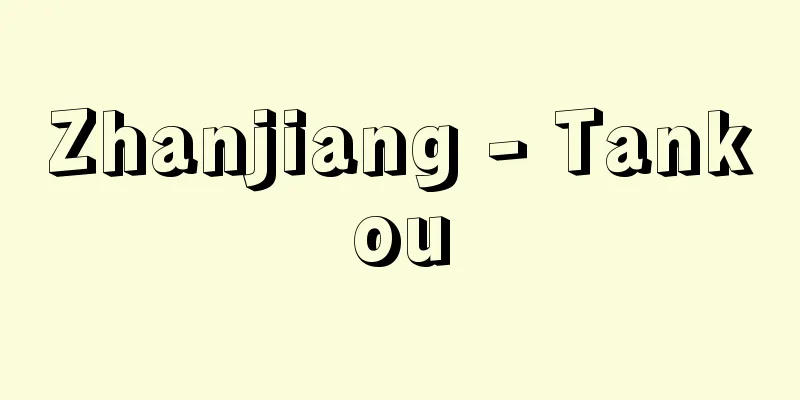Kinki Region - Kinki-chiho

|
Located in the center of the Japanese archipelago, the 135th degree east longitude of the Japanese Standard Time Meridian passes through the Kinki region. It faces the Sea of Japan to the north and the Pacific Ocean to the south, and includes two prefectures, Osaka and Kyoto, and five prefectures: Mie, Shiga, Hyogo, Nara, and Wakayama. However, as major metropolitan areas, Mie and Shiga are also included in the Chubu region, and Fukui is included in the Kinki region. The name Kinki region means Kinai and the areas adjacent to it, and was generalized as one of the eight regional divisions of Japan that began in the post-Meiji era. Kinai was named after the Chinese Han Dynasty name for an area 500 ri (1 ri is about 400 meters) in all directions centered on the royal palace, and was described in the Taika Reforms Imperial Edict as "the first capital to be established, Kinai established," and its extent was described as "from Yokokawa in Nahari to the east, from Senoyama in Kii to the south, from Kushibiuchi in Akashi to the west, and from Osakayama in Sasanami in Omi to the north, forming the province of Kinai." Later, under the Kunigun system of the early Heian period, the area was divided into five provinces, Yamato, Yamashiro, Settsu, Kawachi, and Izumi, and was therefore also called the Five Kinai Provinces. The area of the Kinki region consists of these five Kinai provinces and the surrounding provinces of Omi, Iga, Ise, Shima, Tamba, Tango, Tajima, Harima, Kii, and Awaji, totaling 15 provinces, but when the term Kinki first began to be used in the later Meiji period, it came to refer to the two prefectures and five prefectures that were established within this area. The Kinki region, centered on Kinai, is the birthplace of the ancient Japanese nation, and since then, as the royal castle, it was the political, economic, and cultural center of Japan until the capital was moved to Tokyo in the early Meiji period. This is why it is sometimes called Kamigata (upper part of the country). During the period of samurai rule, there was a time when the political center moved away from Kinai, but the imperial culture that flourished during the Nara and Heian periods became the foundation of Japan's culture, and even during the Edo Shogunate, Osaka boasted of its economic power as the "kitchen of the world." Even after the Meiji period, the Hanshin industrial area, which developed based on the economic power of the commercial capital Osaka, maintained its position as the top of Japan's three major industrial areas. The economic dominance of the Kinki region continued until World War II, but after the war, with the strengthening of centralization in the capital Tokyo, the Kinki region showed a relative decline that can be expressed as a decline in its status. However, the 1970 World Expo was a catalyst for momentum to restore Kinki's prominence, but it has not been able to match the growth of the Tokyo metropolitan area, and continues to this day. The Kinki region is called Kansai in contrast to Kanto. In ancient times, it was referred to as the east and west bordered by the Fuwa Barrier, and since early modern times, it has mainly been referred to by the Hakone Barrier. The area has not been determined, but the Kinki region is often referred to as Kansai in contrast to Kanto, mainly due to its cultural characteristics. Kansai International Airport, built in Osaka Bay in 1994, can be said to be a symbol of this. Furthermore, when referring to Western Japan, the Kinki region is generally considered to be at its center. [Yoichi Koike] NatureterrainThe Kinki region is located at the turning point where the island of Honshu changes direction from northeast to west, and can be broadly divided into three topographical zones. First, there is the Central Lowland, which runs continuously from east to west from the Harima Nada Sea in the Seto Inland Sea through Awaji Island to Osaka Bay and then on to Ise Bay. Second, there is the Northern Mountains, which border the Central Lowland to the north and reach the Sea of Japan. Third, there is the Southern Mountains, which jut out into the Pacific Ocean to form the Kii Peninsula, south of the Central Lowland. The Median Tectonic Line, which divides western Japan into the Inner and Outer Zones, runs straight from east to west along the southern edge of the Central Lowland. The Central Lowland, which belongs to the Inner Zone, is an extension of the Seto Inland Sea depression, and is based on Palaeozoic strata and granite that broke through and intruded into the region during the Mesozoic era, with diluvial and alluvial deposits deposited on top. Representative examples include the limestone of the Suzuka Mountains, known as the Omi Karst, and the granite of Mt. Tanakami, Mt. Ikoma, and Mt. Rokko. Other examples include the Yamato Sanzan, Mt. Nijo, Mt. Mikasa, and Mt. Kasuga of the Setouchi volcanic system. Subsequent tectonic movements created the framework of the current topography, including ridge mountains and rift basins. Many of the mountains are ridges that run north-south, such as the Suzuka and Nunobiki mountains that extend south from the Ibuki mountain range, which forms the border with the Chubu region, the Hira mountain range on the west shore of Lake Biwa, the Ikoma and Kongo mountain ranges in the eastern part of Osaka Bay, and the Rokko mountain range in the north. In between are the Ise and Osaka plains, as well as the graben basins of Omi, Ueno, Kyoto, and Nara. The Omi Basin is home to Lake Biwa, Japan's largest lake, with an area of 670 square kilometers, and is known as the water jar of Kinki, as it is the source of water for the Kyoto, Osaka, and Kobe areas. The Yodo River, which flows from Lake Biwa and collects water from Iga and Kyoto, has a drainage area of 8,240 square kilometers and forms the Osaka Plain at its mouth. The Yamato River flows from the Nara Basin into Osaka Bay, and the Suzuka River and Kumozu River flow into Ise Bay. Across Osaka Bay, Awaji Island is also a landform formed by faults. The northern mountain range is an extension of the plateau-like Chugoku Mountains that spreads northwest of the central lowland, and is divided into the Tamba highlands in the east and the Bantan mountain range in the west. The Tamba highlands gradually decrease in altitude from the Hira and Rokko mountains, and include the Fukuchiyama Basin along the Yura River that flows into Wakasa Bay, and the Kameoka and Sasayama fault basins along the Ooi River and Kako River, which flow south and are part of the Yodo River system. The Bantan mountain range is bounded by mountains such as Hyonosen and Mimuro, and borders the Chugoku mountain range. Apart from the Toyooka Basin along the Maruyama River that flows into the Sea of Japan, there is little flat land, and the subsidence coastline is included in the San'in Kaigan National Park. In contrast, the Harima (Himeji) Plain stretches along the Seto Inland Sea coast. The northern mountain range generally forms a contoured plateau, and in some places it is difficult to determine the watershed. The Southern Mountains belong to the outer belt south of the Kinokawa River and Kushida River along the Median Tectonic Line, and jut out into the Pacific Ocean as the Kii Peninsula. From the north, the newest strata are arranged in a belt, starting from the Palaeozoic, Mesozoic, and Tertiary layers. Following this, the mountain ranges run roughly east-west, but in the center, the Omine Mountains, with Sanjogatake as its main peak in the east, and the Kiwa Mountains, with Gomadan as its main peak in the west, run north-south. Following this mountain range course, the Kinokawa River and Hidaka River flow west, the Kushida River and Miyagawa River flow east, and the Kumano River flows south. Many of the rivers form incised meanders, such as the Doro Gorge of the Kitayama River, and there are few plains except for the Kinokawa River estuary plain. As the mountains approach the sea, repeated subsidence and uplift have occurred, resulting in many ria coasts where marine terraces have been eroded and subsided, as seen on the Shima Peninsula, as well as the tombstone coasts of Shionomisaki and Shichirimihama. Influenced by igneous rocks that have welled up from the Tertiary layer, there are also many hot springs in Katsuura, Shirahama, and other areas. [Yoichi Koike] climateThe Kinki region is divided into the Sea of Japan climate zone on the slope of the Sea of Japan, the Pacific climate zone on the slope of the Pacific Ocean, and the Seto Inland Sea climate zone between the two. The Sea of Japan climate zone includes the northern mountainous region, excluding the Seto Inland Sea coast. It receives more snowfall in winter than in summer due to the direct influence of northwesterly winter monsoons. The winter temperature is not so low, but there are few sunny days. In contrast, the Kii Peninsula, which belongs to the Pacific climate zone, is relatively warm in winter, but receives more rain in summer due to the southeasterly monsoons and typhoons. The southern part of the peninsula receives more rainfall per year, and exhibits the characteristics of a Nankai climate. The Seto Inland Sea climate zone is the area from the Seto Inland Sea to Ise Bay, which is mainly composed of the central lowlands. The monsoons are blocked by the north and south mountainous regions, and the temperature is warm, but the annual precipitation is less than 1200 mm, and it is known for its many irrigation ponds. The coast of Ise Bay receives slightly more rain, and is a transition zone between the Seto Inland Sea climate and the Pacific climate. Furthermore, the inland basins show large temperature differences and inland characteristics. The vegetation of the Kinki region originally belonged to the warm-temperate evergreen broad-leaved forest zone, and although camphor, camellia, and oak trees still grow naturally in various places, artificial forests of conifers such as cedar and cypress have become more prevalent. The warm Kii Peninsula is home to natural forests of podocarpus, tropical plants such as the Japanese laurel and giant oak can be seen on the coast, and primeval forests of beech and other species remain in the northern mountainous region. Corals and other tropical organisms can be seen along the coast of the Kii Peninsula, such as in Kushimoto and Nigishima, and some areas have been designated marine parks. [Yoichi Koike] industryIn 1994, the net prefectural product of the seven prefectures in the Kinki region was about 86 trillion yen, which, along with the Chubu region, was just under 18% of the national total, but less than half that of the Kanto region. Of this, the tertiary industry accounted for about 65%, the secondary industry for about 34%, and the primary industry for only 0.9%. The total cultivated land area of the Kinki region is about 320,000 hectares (1996), but most of it is concentrated in the central lowlands, mainly in Shiga and Mie, and in plains and basins along the Seto Inland Sea coast. The average rate of paddy fields is 78%, which is much higher than the national average of 55%, but most of the land is multi-cropping. There are many small-scale farms, with 20% (Shiga) to 54% (Osaka) of farms with cultivated land of less than 50 ares, but in the suburbs of Kyoto and Osaka, intensive commercial cultivation has been practiced for a long time, and this has been called Kinki-style agriculture. The rate of second-class part-time farmers exceeds 80% in almost all prefectures. Since 1995, statistics have been collected by classifying farmers into full-time farmers, semi-full-time farmers, and sub-full-time farmers, and in 1996 the rate of full-time farmers was 6.6% in Shiga and 41.4% in Wakayama. Looking at the income and expenditure per farm household, non-farming income is more than seven times that of agricultural income, which maintains high farm income. As a result, agricultural machinery is widely used, and although rice production is only about 9% of the national total (1995), there is a wide range of commercial cultivation, including onions and grapes in Osaka Prefecture, watermelons in Nara, tea in Mie, Nara, and Kyoto, citrus fruits, flowers, and plums in Wakayama, and flowers on Awaji Island. The northern mountainous region, known for its Tajima beef, is a cattle-raising region, and Hyogo Prefecture in particular is number one in the Kinki region for both beef and dairy cattle. Hyogo is also one of the leading producers of broilers. In forestry, the export of timber from the Kinki region progressed early on to meet the demand in the ancient cultural areas. The Kii Mountains, with their warm climate and high rainfall, have a particularly large amount of timber stored, but due to the recession and increased imports of foreign timber, the timber production volume of the three prefectures of Wakayama, Nara, and Mie in 1996 was only 1.22 million cubic meters. However, cedar from Yoshino County, Nara Prefecture, along with cedar logs from the Kitayama area of Kyoto, maintains the tradition of being a high-quality brand. The fishing industry in the Kinki region is thriving along the coast of the Kii Peninsula facing the Pacific Ocean, with 99 fishing ports in Wakayama Prefecture and 71 in Mie Prefecture, which have a combined annual catch of 300,000 tons. Offshore and deep-sea fishing of bonito and tuna is also practiced, and pearl farming on the Shima Peninsula is world-renowned. Hyogo Prefecture, which faces the Sea of Japan and the Seto Inland Sea, has 71 fishing ports and an annual catch of 170,000 tons. In addition to coastal fishing such as fixed net fishing for yellowtail throughout the Kinki region, aquaculture is particularly prevalent, particularly of yellowtail, sea bream, and shrimp. The industry of the Kinki region is dominated by the Hanshin industrial area, and its total industrial shipments amounted to 60 trillion yen (1996), which is 20% of the national total, second only to the Kanto region, which accounted for 32%. Modern industry in the Kinki region is centered on heavy chemical industries in the coastal areas of Kobe, Amagasaki, Osaka, Sakai, etc. on the Osaka Bay coast, and extends westward to Akashi, Himeji, and Aioi in the Harima industrial area, and southward from Izumiotsu to Izumisano, and further to the northern coastal industrial area of Wakayama Prefecture, and also extends northeast along the Yodo River, from Kyoto to Otsu and onto the eastern shore of Lake Biwa. The Hokusei industrial area, including Yokkaichi and Kuwana on the west coast of Ise Bay, is also developed on the southern edge of the Chukyo industrial area. Modern industries can be found in the surrounding Kii Peninsula, including lumber and paper manufacturing in Shingu City, and in the northern mountain area, glass manufacturing in Maizuru City. Regional differentiation is also evident in these modern industrial zones. Vast areas of reclaimed land have been developed in the coastal areas stretching from Kobe to Sakai, and large factories for steel, shipbuilding, petroleum, electrical appliances, machinery, and chemicals have gathered there, surrounded by small and medium-sized factories for spinning, food, and general goods. Metals, chemicals, machinery, and spinning are located in the Harima Industrial Region, spinning and textiles are located in the Sennan cities, and steel, chemicals, and petroleum are located in northern Wakayama Prefecture. Textiles, electrical appliances, food, and high-tech industries are found along the Yodo River, all the way to the eastern part of Koto. Petroleum, chemical fibers, furniture, and other industries are located in Yokkaichi and Kuwana. However, in the historic Kinki region, traditional industries remain in addition to modern industries in various places. Many local specialties are known in the area, including Kyoto's Nishijin textiles, Yuzen dyeing, Kiyomizu ware, and Kyoto fans, as well as cutlery from Sakai and Miki, sake breweries from Nada and Fushimi, Nara brushes and ink, soy sauce from Tatsuno, Miwa somen noodles from Sakurai City, Nara Prefecture, braided cords from Ueno, Mie Prefecture, pottery from Shigaraki, Shiga Prefecture, and lacquerware from Kuroe, Kainan City. [Yoichi Koike] trafficThe Kinki region has long been the political and cultural center of Japan, and is known as the Seven Gates of Kyoto, with routes leading from Kyoto to the rest of the country, including the Tokaido, Saigoku Kaido, San'in Kaido, and Hokkoku Kaido. Pilgrimage routes to Ise Shrine, Kumano Sanzan, and other places developed early on, and these were renovated to become national and major prefectural roads, forming the backbone of the Kinki region's transportation trunk lines. A network of expressways is also currently well developed. Railways also developed in a network-like manner, centered on Osaka, including the Tokaido and Sanyo Shinkansen, but some lines have been abandoned due to a decrease in passenger numbers due to motorization. Private railways also competed with each other with advanced facilities, centered on Osaka, and were considered one of the characteristics of the Kinki region, but in recent years they have stagnated, and development of amusement parks and housing complexes is underway along the lines. The same is true for bus transportation, and in remote mountain areas, the proportion of depopulated buses subsidized by subsidies is increasing. As of the end of 1996, the number of automobiles owned in the Kinki region was just over 10.53 million, accounting for 15.7% of the national total. The Kinki region has two international strategic ports, Kobe and Osaka, and four international hub ports, Sakai-Senboku, Himeji, Wakayama Shimotsu, and Yokkaichi, with Kobe Port being one of Japan's leading foreign trade ports. It was damaged in the Great Hanshin-Awaji Earthquake in January 1995, but redevelopment of its port facilities began in 1998. There are seven other important ports, of which only one, Maizuru Port, faces the Sea of Japan, and the rest are all located on the Pacific coast. There were frequent regular shipping routes to Awaji Island and various parts of the Seto Inland Sea, but with the opening of the Onaruto Bridge between Awaji Island and Shikoku in June 1985 and the Akashi Kaikyo Bridge in April 1998, most coastal shipping routes were discontinued. There is also Osaka International Airport in Itami city and the third-class Nanki Shirahama Airport in Shirahama town, Wakayama prefecture, but due to overcrowding and pollution at Osaka International Airport, Kansai International Airport was opened in the southern part of Osaka Bay in September 1994. [Yoichi Koike] developmentAfter the establishment of the ancient state, until the capital was moved to Heian, the construction of capital cities took place approximately 60 times, but with the exception of a part of Omi, all of these were limited to the area of Kinai. These constructions are believed to have had a major impact on the development of various areas of Kinai at the time. In particular, the construction of large-scale capital cities such as Heijo-kyo, measuring 4.6 km north to south and 3.1 km east to west, and Heian-kyo, measuring 5.3 km north to south and 4.7 km east to west, was a factor in promoting the development of forests and transportation routes across Kinai, even if it was only for the procurement of building materials. The development of cultivated land, which was the basis of the productivity that supported this, can be seen in the remains of the jori land division, mainly in Kinai. In addition, the dense distribution of agricultural reservoirs and the construction of irrigation channels to overcome the low rainfall climate of the Seto Inland Sea also show the progress of development of the Kinai region since ancient times. The advanced development of the Kinki region can be seen in the construction of shrines and temples against the backdrop of the control of vast manors in the Middle Ages, the management of castle towns in various areas in the early modern period, and the development of transportation routes and facilities. The development of new rice fields in the early modern period was also promoted in various areas, but the highlight was the diversion of the Yamato River, completed in 1704 (Hoei 1), and the associated development of 1,063 chobu of new rice fields. In addition, the Uji River and Kizu River once flowed into Oguraike Pond, which remains as a ruined lake in the Kyoto Basin, a fault basin, but when Toyotomi Hideyoshi built Fushimi Castle, he separated the Uji River, and in 1933 (Showa 8) he separated the Kizu River and at the same time began reclamation, which was completed in 1941 and created 700 hectares of rice paddies. Following the modernization of the Meiji period, the construction of transportation routes such as railways, the creation of industrial zones, and urban development progressed, leading to the formation of the Hanshin Metropolitan Area. Air raids during World War II left many areas, including Osaka City, devastated, and the development of the Yoshino-Kumano Special Area, which was the first step in postwar reconstruction, was carried out under the National Land Comprehensive Development Act from 1950 onwards, mainly focusing on the development of the Totsugawa and Kumano rivers. With the completion of disaster prevention and power generation dams such as Sarutani Dam, and the change of the river basin to the Kino River, water was also diverted to the Yamato Basin. Large-scale land reclamation was also carried out in Osaka Bay and Ise Bay to create industrial sites, and large-scale housing complexes were developed in Senri, Senboku, Hokusetsu, Seishin, and other areas. These are based on the Kinki Region Development Law of 1963, and the Lake Biwa Comprehensive Development, focusing on water resource development, has been underway since 1972, but with growing regret over development, including pollution, emphasis has been placed on environmental conservation and resident welfare. As part of a plan to restore Kansai's prominence, Kansai International Airport was constructed off the coast of Senshu (1994), and the development of the Kansai Culture and Academic Research City in the Keihan-Na Hills is also underway. [Yoichi Koike] populationThe total area of the Kinki region is 33,100 square kilometers, or 8.8% of the entire nation (2006), and its total population is 22.76 million, or 17.8% of the national population (2005). The population density is therefore 687 people per square kilometer, roughly double the national average of 338 people, making it the second most densely populated region after the Kanto region. A look at the distribution of population shows that 39% is in Osaka, 25% in Hyogo, and 12% in Kyoto, with these three prefectures accounting for a combined total of 75%, while Mie, Nara, Shiga, and Wakayama each account for only 5-8%. This is roughly reflected in the number of cities incorporated into each prefecture, with Osaka having 33, Hyogo having 28, Kyoto having 13, Mie having 15, Nara having 11, Shiga having 13, and Wakayama having 7 (as of October 2005). In the 1995 census, the ratio of the population of densely populated areas to the total population of each prefecture was also high for Osaka Prefecture at 95%, Kyoto Prefecture at 81%, and Hyogo Prefecture at 73%, while the ratios for Nara at 62%, Wakayama Prefecture at 42%, Mie at 40%, and Shiga at 37%. Mie Prefecture has a low population concentration rate compared to the number of cities, while Wakayama Prefecture has a low population density but a high degree of concentration. The population by industry is roughly proportional to the population density distribution, with the tertiary industry ratio being around 70% in the densely populated Keihanshin area, and the primary industry ratio increasing the further away from Keihanshin (2005). The population of the first census (1920) was 9.212 million, but by the end of the Taisho era, it had exceeded 10 million, and by 1940 (Showa 15), it had fallen to 13.13 million. During World War II, the population decreased due to war damage, and even in 1950, it was still only 13.07 million, but with the subsequent economic growth, it increased rapidly to 15.52 million in 1960, 18.95 million in 1970, 21.21 million in 1980, and 22.21 million in 1990. However, there are also regional differences in the rate of increase, and in 1996, Nara and Shiga were higher than in the previous year, which is the result of the population of Osaka and Kyoto being dispersed due to the development of housing complexes, etc., and in both cities, the daytime population is higher than the resident population, and the rate of increase is relatively low. However, the population of rural areas continues to decrease, and is particularly noticeable in the northern mountainous area and the Kii mountainous area. This is inversely proportional to the rate of the elderly population over 65 years old. [Yoichi Koike] historySince prehistoric times, the Kinki region has had exchanges with the Korean Peninsula and mainland China through the Seto Inland Sea. The influence of these exchanges can be seen in the dense prehistoric ruins distributed in the Yamato Plain and the Osaka Plain. The Yamato Imperial Court, which was established here in due course, established a Ritsuryo system, and Heijo-kyo, built in 710 (Wado 3), was modeled on the Chinese capital system. Thus, Kinai became the political, economic, and cultural center of Japan. Envoys to the Sui and Tang dynasties were frequently sent here, and many settlement ruins of immigrants who brought continental culture are also found here, and these can be seen in the temples, shrines, buildings, and cultural properties. Since the capital was moved to Heian-kyo in 794 (Enryaku 13), the Heian culture that flourished here has become the basis of Japan's culture since then. Markets were opened on both the east and west sides of Heian-kyo, and products from all over the country were sent there as tax. This is supported by the tributes from each province recorded in the Engishiki, which shows that there were particularly many products from the Kinki provinces, particularly Izumi, Kawachi, and Harima, indicating that development had occurred early. Even in the Middle Ages, tribute rice and other items were transported by sea and inland waterways to Kinai, where aristocrats who owned manors and temples and shrines were concentrated, so port towns developed along the Seto Inland Sea, Osaka Bay, and Ise Bay coasts, as well as the Lake Biwa water system, which were maritime and land-based junctions. There was also a high density of temple towns, post towns, and market towns surrounding shrines and temples, particularly in the Kinki region. Port towns such as Sakai, Hyogo, Kuwana, and Kinominato, Otsu and Imazu on the shores of Lake Biwa, Kizu and Yodo on the Yodo River system, and towns around Iwashimizu Hachiman, Ishiyama Honganji, Ise Jingu, Tondabayashi Betsuin, Koyasan, Kumano Sanzan, and many other shrines and temples developed during this period. The political center shifted during the Kamakura period, and Kyoto was reduced to ashes by the Onin War (1467-1477), but the warlords of the Warring States period headed for the royal castles to compete for supremacy over the country. Oda Nobunaga and Toyotomi Hideyoshi attempted to restore Kyoto, and Kinai once again became the center of the country. Furthermore, Hideyoshi's construction of Osaka Castle on the site of Ishiyama Hongan-ji Temple, the excavation of canals, and the development of the city became the basis for Osaka's subsequent development. During the Edo period, the shogunate moved to Edo, but after the Siege of Osaka, the city was redeveloped, and storehouses for various feudal domains were established in Osaka. As a major distribution center for products from various regions, Osaka was called the "kitchen of the world," and its economic power surpassed that of Edo. Under the shogunate-han system, castle towns were located all over the area, controlled by feudal lords. In Kinki, where the shogunate controlled many territories, there were no large domains other than the Kii domain, but there were over 90 castle towns with land holdings of over 10,000 koku, and many of these were located in key transportation locations and also served as port towns or post towns, and many of these remain today as regional cities. With the encouragement of each domain, the development of production areas for specialty products progressed. These include Tango crepe, Nagahama mosquito nets, Matsusaka cotton, Banshu somen noodles, Ako salt, and Arita mandarin oranges. After the Meiji era, Tokyo became the capital, and the region's vitality seemed to decline for a time, but with its accumulated culture and economic power, it developed modern industry, centered on the Keihanshin area, and regained its position as the economic center of Japan. This is evidenced by the fact that Osaka City had the largest population in Japan and the sixth largest in the world in the early Showa era. However, after World War II, centralization in the capital Tokyo intensified, and many companies moved their head office management departments to Tokyo, causing the Kinki economy to decline. The opportunity to recover from this momentum was the 1970 World Expo held in Osaka, and since then, efforts have been made to restore Kansai's popularity, such as the construction of Kansai International Airport. [Yoichi Koike] FolkloreThe Kinki region has long been a rice-growing region, and many folk customs related to rice remain to this day. Furthermore, because of its high productivity, the region has passed down ancient agricultural folk customs in various regions. Furthermore, with the emergence of a major city, Osaka, in the early modern period, a culture centered around Osaka also came into being. Some farmers in the Osaka suburbs would sell the vegetables they grew at markets in Osaka's Tenma district and other areas, and would take home night soil from the city. Nevertheless, Hyogo Prefecture and southern Wakayama Prefecture are major mining areas for gold, silver, copper, and iron, while Kyoto Prefecture, Nara Prefecture, and Wakayama Prefecture are mountainous and forested areas, and each has its own unique folk customs. In fishing villages, the age hierarchy system is particularly well developed. [Tanaka Hisao] Social lifeIn northern Hyogo Prefecture, the activities of age groups were extremely prominent. Boys up to 13 years old hold the Kitsunegaeri festival on January 14th and 15th. The children make a procession, erect a sacred wand at the village border, and go to the house where the bride has been married to celebrate. It is said that if you see the Kitsunegaeri procession, your eyes will go blind, and the procession is preceded by cries such as "Put out the fire, put out the fire" or "Go to bed early." In autumn, children throughout the Kinki region make Inokozuki with straw sticks. They walk around, receiving botamochi rice cakes from each house. However, even in Hyogo Prefecture, near the border with Okayama Prefecture, they attach a rope to a boar made of 13 river stones sandwiched between sandawara. When they become Wakanaka (young people's group), they participate in the pulling of festival floats and performing arts. Then, they finally begin to participate in village politics. Among these, the most important job is to hold the village shrine festival. In Shiga Prefecture, Kyoto Prefecture, and other areas, villagers become kannushi (one-year priest) for one year, and are on duty at the shrine, with the important duty of conveying the will of the gods to the villagers. From the New Year until rice planting, pre-celebration ceremonies known as Kayu-ranai and Onda are held all over the country. A famous Onda event is held at Asukaniimasu Shrine (Asuka Village, Nara Prefecture) on the first Sunday of February. In Hyogo Prefecture, Hiromine Shrine in Himeji City holds Onda on April 3rd, and the Hozoroe Festival on the 18th, which predicts the harvest, attracts believers from as far away as Osaka and Wakasa. [Tanaka Hisao] A person's lifeFamous gods for granting children are Agata Shrine in Kyoto and Ko Hachiman in Tanba Sasayama, Hyogo Prefecture, while famous gods for safe childbirth are Mayasan in Kobe, Nakayama Kannon in Takarazuka, and Amida Temple in Ono, Izumi. In the old days, people prayed to Jizo at Oinosaka in Kyoto. Even if the baby was a long-awaited birth, in Shiga Prefecture, they were particularly loud about the "impurity" of childbirth. For seven days after birth, the baby was not allowed to leave the birth room (usually a storeroom). In particular, they were not allowed to go near the kudo (the hearth). During this time, the mother from the village took care of everything. On the seventh day, the baby was washed by Toriagebaasan and was finally able to leave the birth room. The seventh day is also the day for naming the newborn. If it was the eldest son (Anii), one character of the family's name was given to the baby. After about a month, the baby would be visited by a shrine.になったんです。 English: The first thing you can do is to find the best one to do. In addition, in Kayahara, Taga Town, Inukami District, Shiga Prefecture, there is a practice that is thought to be inherited by the youngest child. At a man's 42 year old, a man's unlucky year of unlucky year, he serves zenzai and other things, and to a woman's 33 year old, he gives a long piece of food such as a fire chopstick. Many people visit shrines and temples to ward off evil. In Anaga on Awaji Island, he put his sword in the middle of the night and took two male children to the gods. On his way home, he stumbled on the Yotsuji and dropped the money he had brought with him. On his way home, his wife, wearing his formal dress, put on three fingers at the front door and gave a greeting (greeting) a happy greeting (meaning that he had lost his 42 year old yaku). Then it was a banquet. になったんです。 English: The first thing you can do is to find the best one to do. There are also places called Kobaka where children are burial sites only. This is a custom that is widely seen in Nara Prefecture. It was also seen in Higashi Futami Town, Akashi City, Hyogo Prefecture. [Tanaka Hisao] Annual EventsFrom the evening of New Year's Eve to the morning of New Year's Day, events are held to welcome lucky. It is also known as the "Fukumaru Dog Call" event, which involves making golden feces that are distributed from Higashiyama in Nara Prefecture to the Iga region of Mie Prefecture, and the story of the "Otoshi guest" that is distributed in the same region, such as the "Toshioke" sacred object of the New Year is often distributed in the gold-grown area, and rice bales and other sacred objects are seen in the rice crop area. It is also said that the gods of New Year come from the eho. It is also common for New Year to boil with okerabi and celebrate with daifuku tea and persimmons.になったんです。 English: The first thing you can do is to find the best one to do. Mochi is also simmered, but once the rice cakes are finished, they hang on persimmon trees or other places to see the large sea urchin made in Karawara. Those who see the moment they fall are said to become rich. On Setsubun, they sprinkle beans. In particular, Mibudera Temple in Kyoto is bustling with silent kyogen, which tells the origin of bean throwing. On March 3rd, there is a Hinasekku (hinasekku), and on April 8th, the shaka's birthday party is held. On this day, Tendo Hana (Tendo Flower), and flowers such as azaleas and fuji (Fuji) are set up on the tip of the pole. It is said to be a spell that is not bitten by a bear. May 5th is a boy's festival, and on May 5th of the lunar calendar, there is a house in Fujiidera City, Osaka Prefecture, where a picture of a red shoki (shoki) is displayed to remove evil spirits. However, the dew on the morning of the 5th is said to be a medicine, and the wind is wide when he wears a headband with dew on the night dew. It is also said to be a spell for headaches. It was a belief in Gozutenno. In particular, women went to the Shobu bath before anyone else. Originally, rice planting began the next day, so it was the modest way before rice planting. The rice planting was completed between the summer solstice and Hangesho. Hangesho celebrated the hangeko-like wheat rice cakes (Osaka Kawachi region). Around July 31st, the Kawasuso festival was held widely on the Sea of Japan side. This is also a women's festival. On Tanabata on August 7th, we changed the well. To clean the well. Tanabata is a place where live rice crackers are offered at the dombuna and paper kimonos are offered in the western part of Hyogo Prefecture. This day is also known as the seventh day of the Bon Festival, and the beginning of the Bon Festival. However, in reality, it is also called Kokonokabi, and many places welcome spirits on the 9th, the Kannon festival. In the region centered around Sayama City, Osaka, it is rare for two rakugans to be offered to the Buddha of Hatsubon. The Sasayama region of Hyogo Prefecture is the Obon festival on both the 13th and 14th. It is said that even one ear of rice is collected and offered. This is also true in Kitakomatsu, Otsu City, Shiga Prefecture.になったんです。 English: The first thing you can do is to find the best one to do. December 1st is the day where you eat pickled eggplants and rice with red beans. It is a spell to prevent water from slurping. The 8th is a memorial service on the Sea of Japan, and the "8th-day blowing" is a day when a slurping slurping (a type of pufferfish) is blown over. It is taken and hangs it in the entrance or other places to ward off evil spirits. The 9th is a mountain god festival, and you should not enter the mountains on this day. On the 23rd (originally November 23rd of the lunar calendar), there are lily-sprung slurping in the Tajima region of Hyogo Prefecture and Wakasa region of Fukui Prefecture. This god is said to be rough if not enshrined, and it is said that snow will always fall. This is because the lame master travels around the country on this day. [Tanaka Hisao] FolktalesDuring the Taisho era, the Arita Fairy Tales, Nanki National Musume Materials, and Tanba Mouth Monument Collection were compiled, and in the early Showa era, Muro Musume Collection, Yamato Old Tales, and Fairy Tales from the Banshu Kogawa Region were published, and this region has attracted attention from early on. There are unique stories of the culture of the capital that has flourished since ancient times and the folklore of the surrounding mountain village. For example, many "Kuwazu Wife" explain the origin of the May Song, but on the other hand, they talk about the etiquette of people living in the mountains who enter the mountains with mugwort and shobu, and also have been an explanatory and legend of the folklore that wards off evil spirits by peasants, where small fish are trapped between the hooks. It is also said that one-legged cats in Yoshino County, Nara Prefecture, "Cat and Chagama", one-legged Yamaba, "Ushikata Yamaba", and Kobo Daishi and Minamoto Yoshitsune, will also appear on one-legged on December 20th. These are legends that have been concluded with the 20th of the ancient times, when gods were believed to travel, and the folklore that saw the gods that night, and the taboos that were told that they were admonished to go outside. This region has many stories that reflect the lands where Ryusho, which saw the religious base since ancient times, and that they have a legendary tinge of the gods. "Daiyo no Fire," which tells the story of Okadera's lucky charm in Asuka Village, Nara Prefecture, is held in Mie Prefecture and attracts attention. Among the broader traditions, the "Serpent Wife" that was linked to the Mii-dera Mii-dera samurai, and the "Serpent Wife", which is an ancient tradition of Mt. Miwayama, are typical examples. Many also share the flow of sermons. The "Fox Wife" and "Kikimimi", which are also taught in the origin of the Kuzuha Shrine, the Holy Shrine of Shinoda Nomori, became popular as the serpent joruri, and is listed as one of the five sutras. Moreover, it has been promoted as a storyteller under the supervision of Onmyoji, and is also included in the "Gaun Japanese Joruri" and "Hokisho." On the other hand, Kamigata stories have been greatly influenced by the story of the gods and small talk of "Osho and Kozo" and other stories have been popular. The "secrets of the Great Trees" that remains in Omi are based on the legend of giant trees, which is included in the "Kofudoki Itobutsu" and "Three Kingdoms Biography" as its original point of view, but it should be noted that today's prototype can already be confirmed in the "Kofudoki Itobutsu" and "Three Kingdoms Biography." [Junichi Nomura] "Miyamoto Mataji et al., "The History of the Local Region, Kinki Edition" (1959, Hobunkan)" ▽ "Japanese Geography and Culture Series, Kinki Region" (1959, Seibundo Shinkosha)" ▽ "Illustrated Japanese Culture Series, Kinki I, II" (1960, Shogakukan)" ▽ "Fudoki Japan, Kinki Edition" (1960, Heibonsha)" ▽ "Japanese Geography, Kinki Edition" (1960, Iwanami Shoten)" ▽ "Japanese Geography, Volumes 13-15, Kinki Region" (1981, 1982, Ninomiya Shoten)" ▽ "Daimeido Editorial Department, New Japan Geography Seminar 5, Kinki Region" (1986, Daimeido)" ▽ "Miyamoto Mataji's Kansai Civilization and Civilization" (1970, Jiseido)" ▽ "Kinki's Annual Classes" by Tanaka Hisao et al. (1976, Meigen Shobo)" ▽ "Harada Tomohiko et al., "Kansai Climate and History" by Harada Tomohiko et al. (1976, Yamakawa Publishing)" ▽ "Hirosaka Kenjiro et al., "Hirosaka Geography of Kawatani" (1958, Kiku Shobo )" ▽ "Yamaguchi Keiichiro et al., "Asakura Shoten" (1973, Asakura Shoten)" ▽ "Dictionary of Japanese Place Names" by Compilation Committee ( 1985, Kadokawa Shoten)" ▽ "Kyoto Folklore by Inoue Yoritoshi" (1968, Heibonsha)" ▽ "Hyogo Exploration" Folklore Edition (1971, Kobe Shimbun)" ▽ "Study of the Imperial Palace in Omi" by Higo Kazuo (1973, Ringawa Shoten)" ▽ "Japanese Folklore" Shiga, Kyoto, Osaka, Hyogo, Wakayama (1972-1975, Daiichi Hoki)" ▽ "Kinki Folklore by Tanaka Hisao et al. (1973, Meigen Shobo)" ▽ "Kinki Folklore by Kushita Takashi et al. (1977, Meigen Shobo)" ▽ "Kinki Folklore by Kushita Nobuyuki et al. (1978, Meigen Shobo)" ▽ "Isaka Koji et al., "Kinki Funerals and Tomb System" by Kinki (1979, Meigen Shobo)" ▽ "Tatsumi Eji et al., "Kinki Living Works" by Tatsumi Eiji et al. (1980, Meigen Shobo)" ▽ "Kinki Living Customs" by Hisao et al. (1984, Meigen Shobo)" ▽ "Kinki Living Customs" by Hisao et al. (1984, Meigen Shobo)" ▽ "Kishita Takashi et al., "Foods of Fire in the Kinki Region" (1985, Meigen Shobo) " ▽ "Stone Folklore of the Kinki Region" (1987, Meigen Shobo)" ▽ "Tanaka Hisao, "Annual Events and Folklore Beliefs" (1985, Kobundo)" ▽ "Kishita Takashi, "Village Rituals and Entertainment" (1989, Machi Publishing)" ▽ "Amino Yoshihiko et al., "Animals of Japanese Folklore and Culture, 14 Volumes, Separate Volumes 1" (1994, Shogakukan)" ▽ "Translation of Gold, Silver, Copper, Iron and Steel and the Path of History" (1996, Iwata Shoin)" ▽ "Tanaka Hisao, "Hometown Hyogo: Four Seasons of Living" (1997, Obunsha)" ▽ "Tanaka Hisao, "Development of Ancestors' Ceremonies: Issues in Japanese Folklore" (1998, Seibundo)" [Reference items] | | | | Centre | |Nara (prefecture) |Harima | | | | |©Shogakukan Illustration/Shogakukan Creative "> Kinki Regional Region Map ©Shogakukan Illustration/Shogakukan Creative "> Kinki region location map View from the Maibara side. Lake Biwa Quasi-National Park. Maibara City, Shiga Prefecture / Ibigawa Town, Ibi District, Gifu Prefecture © Lake Biwa Visitors Bureau, Public Interest Incorporated Association "> Mount Ibuki Main peak (1212m above sea level) in the Suzuka Mountains, which forms the center of Suzuka National Park. Also known as Mt. Gozaisho. The mountain peak is developed as a mountain park, with a total length of 2161m and a height difference of 780m can be reached from the foot of the mountain. The photo is on the side of Yamagami Park Station on the east side. Komono-cho, Mie District, Mie Prefecture © Mie Prefecture Tourism Federation, Public Interest Incorporated Association "> Mt. Gozaisho View from Mt. Hiei. Otsu City is in the foreground and Kusatsu City is in the opposite shore. Lake Biwa National Park area. Shiga Prefecture © Biwako Visitors Bureau, Public Interest Incorporated Association "> Lake Biwa A scenic spot on the Kitayama River, a tributary of the Kumano River. It is included in Yoshino-Kumano National Park. From the downstream, it is divided into Shimotoro, Kamidoro, and Okutoro, and Shimotoro (Toro Hachicho) is a nationally designated special place of scenic beauty and a nationally designated natural monument. Jet boat tours are also available. Kumano City, Mie Prefecture / Shingu City, Wakayama Prefecture / Totsukawa Village, Yoshino District, Nara Prefecture © Mie Prefecture Tourism Federation "> Doro Gorge The largest bay on the Shima Peninsula. The bay, which has a typical ria coastline, is dotted with islands of various sizes. The scenery of floating rafts for cultivating pearls is representative of Ise-Shima National Park. The photo looks south from Yokoyama Observatory (203m above sea level) west of Ugata, Shima City. Shima City, Mie Prefecture © Mie Prefecture Tourism Federation "> Ago Bay Yoshino Kumano National Park area. Kushimoto-cho, Higashimuro-gun, Wakayama Prefecture © Wakayama Prefecture "> Cape Shionomisaki It is a long coastline of approximately 20km from Kimoto, Kumano City to the mouth of the Kumano River. It is located in Yoshino Kumano National Park. It is one of Japan's most sandy and gravel coasts, and its beautiful stones are called Mihama Pebbles. The photo shows the view from Matsumoto Pass northwest of Kimoto. Kumano City, Mie Prefecture, Mihama Town, Minamimuro District, and Kiho Town © Mie Prefecture Tourism Federation, Public Interest Incorporated Association "> Shichiri Mihama The sandbar was created over many years by sand carried by the wind and tides in Miyazu Bay. The photo shows the view from the Ejiri side, with Asoumi Sea on the right. A forest of over 7,000 black pine trees stretches out to the opposite shore in a beautiful green belt. It is part of the Tango-Amanohashidate-Oeyama Quasi-National Park and is one of the "Three Views of Japan." Nationally designated Special Place of Scenic Beauty Miyazu City, Kyoto Prefecture ©Masashi Tanaka "> Amanohashidate View from the sea near the Meriken wharf. Kobe City, Hyogo Prefecture © Kobe International Tourism Convention Association, General Incorporated Foundation "> Port of Kobe The view from the Ogeshima side of Naruto City. Awaji Island is on the opposite shore. Minamiawaji City, Hyogo Prefecture and Naruto City, Tokushima Prefecture ©Tokushima Prefecture "> Onaruto Bridge View from the Awaji City side. Kobe City and Awaji City, Hyogo Prefecture © Awaji Island Tourism Association "> Akashi Kaikyo Bridge Photographed from the south. Osaka Prefecture, Izumisano City, Tajiri Town, Sennan District, Sennan City ©Shogakukan "> Kansai International Airport Tower gate and corridor (both designated as important cultural properties by the national government). Yawata City, Kyoto Prefecture © Yawata City Tourism Association "> Iwashimizu Hachiman Shrine It enshrines Amaterasu Omikami (the Sun Goddess). It is also called the Inner Shrine. The photo shows the main shrine located at the innermost part of the Inner Shrine. Through the wooden fence you can see the main hall (right), the Western Treasure Hall, and the Eastern Treasure Hall behind that. The Shin-gochi in the foreground is where a new shrine building will be built when the shrine is relocated. Ise City, Mie Prefecture © Ise Shrine Office, Mie Prefecture Tourism Association "> Ise Shrine (Ise Grand Shrine) Main Hall. Part of the World Cultural Heritage Site "Sacred Sites and Pilgrimage Routes in the Kii Mountains" (registered in 2004) Takano-cho, Ito-gun, Wakayama Prefecture © Wakayama Prefecture "> Kongobu-ji Temple Kamishisha (national designated Important Cultural Property). Part of the World Cultural Heritage Site "Sacred Sites and Pilgrimage Routes in the Kii Mountains" (registered in 2004) Tanabe City, Wakayama Prefecture © Wakayama Prefecture "> Kumano Hongu Taisha Shrine Hall of worship. Part of the World Cultural Heritage Site "Sacred Sites and Pilgrimage Routes in the Kii Mountains" (registered in 2004) Shingu City, Wakayama Prefecture © Wakayama Prefecture "> Kumano Hayatama Taisha Shrine Main hall. From the right, the 1st to the 5th hall (all designated nationally important cultural assets). Part of the World Cultural Heritage Site "Sacred Sites and Pilgrimage Routes in the Kii Mountains" (registered in 2004) Nachikatsuura-cho, Higashimuro-gun, Wakayama Prefecture © Wakayama Prefecture "> Kumano Nachi Taisha Shrine It is also called Kinjo (Nishikijo), and is written as Osaka Castle after the Meiji period. It began in 1496 (Meiou 5) when Rennyo, a monk of Jodo Shinshu, established a Bettein, and later became a fortress. It was built in 1583 (Tensho 11), and was almost completed in 1585. The current castle tower was created in 1931 (Showa 6) by imitating the castle tower from the Toyotomi clan. Nationally designated historical site Osaka City, Osaka Prefecture ©Shogakukan "> Osaka Castle (Osaka Castle) Sun-drying ©Shogakukan Photographed by Tajima Masaru "> Miwa Somen noodles ©Mie Prefecture Tourism Association "> Iga Braid ©Wakayama Prefecture "> Kishu Lacquerware Source: Shogakukan Encyclopedia Nipponica About Encyclopedia Nipponica Information | Legend |
|
日本列島の中央部に位置し、日本標準時子午線の東経135度が近畿地方を通る。北は日本海、南は太平洋に臨み、大阪、京都の2府と、三重、滋賀、兵庫、奈良、和歌山の5県を含む。ただし大都市圏としては、三重県、滋賀県は中部圏にも含まれ、福井県は近畿圏に包含される。 近畿地方の呼称は、畿内(きない)とこれに近接した地方の意味で、明治後年に始まる日本の8地方区分名の一つとして一般化したものである。畿内は、王城を中心とした四方500里(1里は約400メートル)をさした中国漢代の称に倣い、大化改新の詔(みことのり)に「初修京師、置畿内」としたもので、その範囲については「東は名墾(なはり)の横河より以来(このかた)、南は紀伊の兄山(せのやま)より以来、西は赤石(あかし)の櫛淵(くしぶち)より以来、北は近江(おうみ)の狭々波(ささなみ)の合坂(おおさか)山より以来を畿内の国となす」と記されている。その後平安時代初期の国郡制によって大和(やまと)、山城(やましろ)、摂津(せっつ)、河内(かわち)、和泉(いずみ)の5国に分けられたので、五畿内ともよばれた。近畿地方の範囲は、この畿内5国とその周辺の近江、伊賀、伊勢(いせ)、志摩、丹波(たんば)、丹後、但馬(たじま)、播磨(はりま)、紀伊、淡路(あわじ)の諸国を加えた15国にあたるが、近畿地方の呼称が始まった明治後年には、この範囲に成立した上記2府5県をさすことになったものである。 畿内を中心とする近畿地方は、日本の古代国家誕生の地であり、以来明治初年の東京遷都に至るまで王城の地としてわが国の政治、経済、文化の中心地であった。上方(かみがた)とよばれることがあるのもそのためで、武家政権期、政治の中心地が畿内を離れた時代はあったが、奈良、平安時代に開花した王朝文化は、わが国の文化の基調となり、江戸幕府の時代においても、大坂は「天下の台所」としてその経済力を誇っていた。明治以後もなお商都大阪の経済力のうえに発展した阪神工業地帯は、わが国三大工業地帯の首位を保ってきた。近畿地方の経済的優位は第二次世界大戦まで続くが、戦後、首都東京への中央集権の強化によって、近畿地方は地盤沈下ということばで表現される相対的衰勢を示してきた。しかし1970年(昭和45)の日本万国博覧会開催を契機として、近畿復権の機運が高まったが、首都圏の成長には比肩できないまま、今日に至っている。なお、近畿地方は関東に対して関西とよばれる。古くは不破(ふわ)の関を、またおもに近世以来は箱根の関を境とする東西の呼称とされ、その地域は確定したものではないが、主として文化的特徴から関東に対する関西として近畿地方をさす場合が多い。1994年(平成6)大阪湾に建設された関西国際空港はその象徴ともいえる。また西日本とよぶ場合も近畿地方がその中心とされるのが一般である。 [小池洋一] 自然地形近畿地方は本州島が北東方向から西方向に変わる転換点にあり、これを次の3地形区に大別することができる。第一に瀬戸内海の播磨灘(なだ)から淡路島を経て大阪湾に通じ、さらに伊勢湾に至る東西に断続する中央低地。第二にその北に接して日本海に至る北部山地。第三に中央低地の南に紀伊半島となって太平洋に突出する南部山地である。 中央低地はその南縁に、西日本を内帯と外帯に分かつ中央構造線が直線的に東西走する。内帯に属する中央低地は瀬戸内海の陥没地帯の延長で、古生層と、中生代にこれを破ってほう入した花崗(かこう)岩類を基盤とし、その上に洪積層や沖積層が堆積(たいせき)。近江カルストとして知られる鈴鹿山脈(すずかさんみゃく)の石灰岩、田上(たなかみ)山、生駒(いこま)山、六甲(ろっこう)山などの花崗岩はその代表である。また瀬戸内火山系の大和三山や二上(にじょう)山、三笠(みかさ)山、春日(かすが)山などがみられる。その後の構造運動によって生じた地塁性の山地と地溝性の盆地など現在の地形の骨格がつくられてきた。中部地方との境界をなす伊吹(いぶき)山地から南に続く鈴鹿山脈、布引(ぬのびき)山地、また琵琶(びわ)湖西岸の比良(ひら)山地、大阪湾東部の生駒、金剛(こんごう)両山地、北部の六甲山地など多くは南北方向の地塁性の山地である。その間には伊勢平野や大阪平野のほか、近江、上野、京都、奈良などの地溝性の盆地が配列する。近江盆地にはわが国第一の湖である琵琶湖があり、面積670平方キロメートル、京阪神の給水源で近畿の水甕(みずがめ)といわれる。琵琶湖から流れ、伊賀、京都の水を集める淀川(よどがわ)は流域面積8240平方キロメートル、河口に大阪平野を形成する。また奈良盆地からは大和川が流れて大阪湾に注ぎ、伊勢湾には鈴鹿川、雲出(くもず)川などが流入する。大阪湾を隔てた淡路島も断層による地塁性の島である。 北部山地は、中央低地の北西に広がる高原状の中国山地の延長部で、東部は丹波高地、西部は播但(ばんたん)山地に分けられる。丹波高地は比良、六甲などの山地からしだいに高度を下げ、若狭(わかさ)湾に注ぐ由良(ゆら)川に沿う福知山盆地や、南流する淀川水系の大堰(おおい)川および加古川に沿って、それぞれ亀岡(かめおか)、篠山(ささやま)などの断層盆地がある。播但山地は氷ノ山(ひょうのせん)、三室(みむろ)山などの山々を連ねて中国山地と境する。日本海に注ぐ円山(まるやま)川に沿う豊岡(とよおか)盆地のほかは平地に乏しく、沈降性の海食海岸は山陰海岸国立公園に含まれている。これに対し瀬戸内海沿岸には播磨(姫路)平野が広がっている。北部山地は全般に等高性の高原をなし、分水界がわかりにくい所もあるほどである。 南部山地は、中央構造線に沿う紀ノ川、櫛田(くしだ)川以南の外帯に属し、紀伊半島となって太平洋に突出する。北から古生層、中生層、第三紀層と順に新しい地層が帯状に並ぶ。これに従い山脈もほぼ東西走するが、中央部には東に山上(さんじょう)ヶ岳を主峰とする大峰(おおみね)山脈と、西に護摩壇(ごまだん)山を主峰とする紀和山脈が南北に走る。この山脈走行に従い、紀ノ川、日高(ひだか)川が西流、櫛田川、宮川が東流、熊野川が南流する。河川は北山川の瀞(どろ)峡に代表される穿入(せんにゅう)曲流をなすものが多く、紀ノ川河口平野のほかは平野に乏しい。山が海に迫り沈降と隆起の反復により、志摩半島にみられるように海成段丘が侵食を受けて沈降したリアス式海岸が多く、潮岬(しおのみさき)の陸繋(りくけい)島や七里御浜(しちりみはま)の砂礫(されき)海岸もみられる。第三紀層に湧出(ゆうしゅつ)した火成岩の影響で、勝浦、白浜などの温泉も多い。 [小池洋一] 気候近畿地方は、日本海斜面の日本海気候区、太平洋斜面の太平洋気候区と、両者に挟まれた瀬戸内気候区に分けられる。日本海気候区は瀬戸内海沿岸を除く北部山地一帯を含む。冬の北西季節風の影響を直接受け降雪が多いため、降水量は夏よりも冬に多い。冬の気温はそれほど低くないが、晴れる日は少ない。これに対し、太平洋気候区に属する紀伊半島は冬に比較的暖かいが、夏には南東季節風や台風の影響で雨量が多く、半島南部は年間4000ミリメートルを超える多雨地帯で、南海型気候の特徴を示す。瀬戸内気候区は中央低地を主とする瀬戸内海から伊勢湾に至る地域で、南北山地によって季節風が遮られ、気温は温暖であるが、年降水量は1200ミリメートル以下の寡雨地帯で、灌漑(かんがい)用溜池(ためいけ)が多いので知られる。伊勢湾沿岸はやや雨量が多く、瀬戸内気候と太平洋気候の遷移地帯である。また内陸の諸盆地は気温較差が大きく内陸性の特徴を示す。近畿地方の植生は、本来暖帯の照葉樹林帯に属し、クス、ツバキ、カシなどはなお各地に自生するが、スギ、ヒノキなどの針葉樹の人工樹林が多くなった。温暖な紀伊半島にはマキの自然林もあり、海岸にはアコウ、オオタニワタリなどの熱帯性植物もみられ、北部山地にもブナなどの原始林が残っている。紀伊半島沿海には串本(くしもと)、二木(にぎ)島などにサンゴその他熱帯性生物がみられ、海域公園に指定されているところもある。 [小池洋一] 産業1994年(平成6)の近畿地方7府県の府県内純生産は約86兆円で、中部地方と並び、全国の18%弱であるが、関東地方の半分に満たない。このうち第三次産業が約65%、第二次産業が約34%で、第一次産業はわずか0.9%にすぎない。 近畿地方の総耕地面積は約32万ヘクタール(1996)であるが、その多くは滋賀、三重を中心とした中央低地や瀬戸内海沿岸などの平野や盆地に集中、水田率は平均78%で全国の55%よりはるかに高いが、ほとんど多毛作が行われる。耕地面積50アール未満の農家が20(滋賀)~54%(大阪)と小規模農家が多いが、京都や大阪などの近郊では古くから商品栽培の集約的な経営が進められ、近畿型農業とよばれてきた。第2種兼業率が各府県ともほとんど80%を超える。1995年から、主業農家、準主業農家、副主業農家という分類で統計がとられるようになったが、1996年の主業農家の割合は、滋賀6.6~和歌山41.4%である。農家1戸当りの収支をみると、農外所得が農業所得の7倍以上を占め、これが高い農家所得を維持している。このため農機具の普及率も高く、米の生産量は全国の約9%(1995)にすぎないが、大阪府のタマネギ、ブドウ、奈良のスイカ、三重、奈良、京都の茶、和歌山の柑橘(かんきつ)類、花卉(かき)、梅、淡路島の花卉など多面的な商品栽培が行われている。また但馬(たじま)牛の名で知られた北部山地は牧牛地域で、とくに兵庫県は肉牛、乳牛とも近畿地方では第一である。また兵庫県はブロイラーの生産でも全国屈指である。林業では古文化地帯の需要にこたえて、近畿地方の木材搬出は早くから進んだ。とくに温暖多雨な紀伊山地の蓄積量は多いが、不況と外材輸入増のため1996年の和歌山・奈良・三重3県の素材生産量は122万立方メートルにとどまっている。しかし奈良県吉野郡の杉は京都北山の杉丸太とともに高級銘柄の伝統を維持している。 近畿地方の水産業は太平洋に面する紀伊半島沿岸が盛んで、和歌山県に99、三重県に71の漁港があり、あわせて年間30万トンの漁獲量があり、カツオ、マグロの沖合・遠洋漁業も行われ、志摩半島の真珠養殖も世界的に知られている。日本海と瀬戸内海に面する兵庫県は71の漁港で年間17万トンの漁獲量がある。近畿地方全般にブリ定置網などの沿岸漁業のほか、とくにハマチ、タイ、エビなどの水産養殖が主である。 近畿地方の工業は阪神工業地帯を控え、工業総出荷額は60兆円(1996)で全国の20%にあたり、32%を占める関東地方に次ぐ地位を占める。近畿地方の近代工業は大阪湾岸の神戸、尼崎(あまがさき)、大阪、堺(さかい)などの臨海部の重化学工業を中心に、西へ明石(あかし)、姫路、相生(あいおい)へと播磨工業地域が、また南に向かって泉大津(いずみおおつ)から泉佐野へ、さらに和歌山県北部臨海工業地域へと連なり、また淀川に沿って北東に延び、京都から大津を経て琵琶湖東岸部に広がっている。また中京工業地帯の南縁として伊勢湾西岸の四日市(よっかいち)、桑名(くわな)などの北勢工業地域が発達している。周辺の紀伊半島では新宮(しんぐう)市の製材、製紙、北部山地では舞鶴(まいづる)市のガラスなどの近代工業がみられる。これらの近代工業地帯にも地域的な分化が現れている。神戸から堺に至る臨海部には広大な埋立地が造成され、鉄鋼、造船、石油、電器、機械、化学の大工場が集まり、これを取り巻いて紡績、食料品、雑貨の中小工場が立地する。また播磨工業地域には金属・化学・機械、紡績が、泉南諸都市には紡績、織物、また和歌山県北部には鉄鋼、化学、石油が立地する。淀川沿いには繊維、電器、食料品、先端技術工業が湖東にまで至っている。また四日市、桑名には石油、化繊、家具などが立地している。しかし歴史の古い近畿地方には、近代工業のほかに伝統工業も各地に残っている。京都の西陣織、友禅染、清水(きよみず)焼、京扇子など、ほかに堺、三木(みき)の刃物、灘(なだ)、伏見(ふしみ)の酒造、奈良の筆墨(ひつぼく)、龍野(たつの)のしょうゆ、奈良県桜井市の三輪そうめん、三重県上野の組紐(くみひも)、滋賀県信楽(しがらき)の陶器、海南市黒江の漆器など、特産品として知られたものが多い。 [小池洋一] 交通古くからわが国の政治、文化の中心であった近畿地方は、京七口といわれるように京都から全国に向かって、東海道、西国(さいごく)街道、山陰街道、北国(ほっこく)街道などが通じていた。また伊勢神宮や熊野三山など全国から集まる参詣(さんけい)道も早くから発達し、これらが改修されて国道や主要地方道となり、近畿地方の交通幹線の骨格をつくっている。また現在は高速自動車道網も発達している。鉄道も東海道・山陽新幹線をはじめ、大阪を中心に網状の発達を示したが、モータリゼーションの影響を受けて乗降客の減少から廃線となるものも現れてきた。民営鉄道も大阪を中心に高度の設備を競い、近畿地方の特色の一つとされてきたが、近年は伸び悩み、沿線に遊園地や住宅団地の開発を進めている。バス交通も同様で、山間僻地(へきち)では補助金による過疎バスの比率を高めている。1996年(平成8)末の近畿地方の自動車保有台数は1053万台強で全国の15.7%を占める高率である。 近畿地方には国際戦略港湾が神戸、大阪の2港、国際拠点港湾が堺泉北、姫路、和歌山下津(しもつ)、四日市の4港あり、ことに神戸港はわが国有数の外国貿易港である。1995年(平成7)1月阪神・淡路大震災により被害をうけたが、1998年港湾施設の再整備が進められた。ほかに重要港湾7、うち日本海に臨む港は舞鶴1港で、ほかはすべて太平洋岸にあり、ことに淡路島や瀬戸内海各地への定期航路は頻繁であったが、1985年6月淡路島と四国間に大鳴門(おおなると)橋、1998年4月明石海峡大橋の開通に伴って、沿岸航路はほとんど廃止された。なお伊丹(いたみ)市に大阪国際空港、和歌山県白浜町に第3種の南紀白浜空港があるが、大阪国際空港が過密と公害のため、1994年9月大阪湾南部に関西国際空港が開港した。 [小池洋一] 開発古代国家の成立後、平安遷都に至るまで都城の造営はほぼ60回に及ぶが、近江の一部を除けばすべて畿内(きない)の地に限られている。それらは畿内各地の開発に、当時大きな影響を与えたものと思われる。とくに南北4.6キロメートル、東西3.1キロメートルの平城京、南北5.3キロメートル、東西4.7キロメートルの平安京という大規模な都城の造営は、その建築用材の調達に限っても、近畿各地の山林開発と水陸にわたる運搬路の開発を進める要因となった。これを支えた生産力の基盤となる耕地の開発は、畿内を中心として条里地割の遺構分布によってしのぶことができる。またこれに伴う瀬戸内寡雨気候克服のための農用溜池(ためいけ)の稠密(ちゅうみつ)な分布と用水路の築造も、古代以来の近畿地方の開発の進度を示すものである。中世においては広大な荘園(しょうえん)支配を背景とした社寺の造営、近世における各地城下町の経営、交通路、交通施設の整備など、近畿地方における開発の先進性をうかがうことができる。近世における新田の開発も各地で進められたが、1704年(宝永1)に完成した大和川付け替えと、これに伴う1063町歩の新田開発はその白眉(はくび)である。また断層盆地である京都盆地の遺跡湖として残った巨椋池(おぐらいけ)には、かつて宇治川、木津川が流入していたが、豊臣(とよとみ)秀吉が伏見築城の際、宇治川を分離、1933年(昭和8)木津川を分離すると同時に干拓を進め、1941年に完成して700ヘクタールの水田が造成された。 明治以後の近代化に伴い、鉄道など交通路の整備、工場地帯の造成と市街地の開発が進められ、阪神都市圏が形成された。第二次世界大戦中空襲によって大阪市をはじめ多くの戦災地を生じ、戦後復興の第一に行われた国土総合開発法による吉野熊野特定地域の開発は、1950年(昭和25)以来主として十津川(とつがわ)・熊野川の河川開発として進められ、猿谷(さるたに)ダムなど防災、発電用ダムの完成と紀ノ川への流域変更により、大和盆地への分水も行われた。また大阪湾、伊勢湾での大規模な埋立てによる工場用地造成、千里(せんり)、泉北、北摂(ほくせつ)、西神をはじめとする大規模住宅団地の造成も行われた。これらは1963年の近畿圏整備法を基盤とし、また水資源開発を中心とした琵琶湖総合開発も1972年以来進められているが、公害発生など開発に対する反省も高まり、環境保全と住民福祉に重点が置かれてきた。関西復権を目ざした計画として泉州沖に関西国際空港が建設され(1994)、京阪奈丘陵における関西文化学術研究都市の整備も進められている。 [小池洋一] 人口近畿地方の総面積は3万3100平方キロメートルで全国の8.8%(2006)、総人口は2276万人で全国人口の17.8%である(2005)。したがって人口密度は1平方キロメートル当り687人、全国平均338人の約2倍で、関東地方に次ぐ人口集積を示している。その分布をみると、大阪府に39%、兵庫県25%、京都府12%で、3府県あわせて75%が集まり、三重、奈良、滋賀、和歌山の各県は5~8%にすぎない。これは府県別の市制都市数にもほぼ反映し、大阪府33、兵庫県28、京都府13を数え、三重15、奈良11、滋賀13、和歌山7となっている(2005年10月)。1995年(平成7)国勢調査の各府県人口集中地域人口の各府県人口に対する比率も、大阪府95%、京都府81%、兵庫県73%と上記3県が高く、ほかは奈良62%、和歌山42%、三重40%、滋賀37%である。三重県は市の数に比し人口集中率が低く、和歌山県は人口密度は低いが集中度が高い。 産業別人口は、人口の集中した京阪神での第三次産業人口比率が70%前後と高く、京阪神から遠ざかるにつれて第一次産業人口比率が高まり(2005)、人口密度分布にほぼ比例する。 人口動態は第1回国勢調査(1920)の人口921万2000が、大正末年には1000万を超え、1940年(昭和15)には1313万となった。第二次世界大戦中は戦災によって減少し、1950年でも1307万であるが、その後の経済成長に伴い、1960年には1552万、1970年1895万、1980年2121万、1990年には2221万と急増。しかし増加率も地域差があり、1996年の前年対比をみると、奈良と滋賀が高く、これは住宅団地の造成などによって大阪市や京都市などの人口が分散した結果で、両市とも常住人口よりも昼間人口が多く、また増加率が比較的低い。しかし郡部人口は減少を続け、北部山地や紀伊山地に著しい。これは65歳以上の老齢人口率に反比例している。 [小池洋一] 歴史近畿地方は瀬戸内海を通じて先史時代から朝鮮半島および中国大陸との交流が行われていた。その影響は大和(やまと)平野や大阪平野に濃密に分布する先史遺跡にみることができる。やがてここに成立した大和朝廷が、律令(りつりょう)体制を整え、710年(和銅3)に造営した平城京も中国の都制に倣うものであった。こうして畿内はわが国の政治、経済、文化の中心地となった。遣隋使(けんずいし)、遣唐使の派遣も頻繁に行われたが、大陸文化をもたらした渡来人の集落遺跡も多く分布し、寺社建築物や文化財にそれをしのぶことができる。794年(延暦13)平安京遷都以来、ここに花開いた平安文化は、その後のわが国の文化の基調をなすことになった。平安京では東西に市(いち)が開かれ、全国の物産が貢租として送られていた。『延喜式(えんぎしき)』記載の諸国の調(ちょう)がそれを裏書きするが、とくに和泉(いずみ)、河内(かわち)、播磨(はりま)をはじめ近畿諸国の物産が多く、開発が早く行われたことを示している。中世においても、荘園(しょうえん)領主の貴族や寺社の集まる畿内へは、貢租米などが海路や内陸水運を利用して運ばれてきたので、水陸の結節点にあたる瀬戸内海、大阪湾、伊勢湾沿岸や琵琶湖水系に港町が発達し、また社寺の門前町や宿場町、市場町も、とくに近畿地方での密度が高い。堺(さかい)、兵庫、桑名、紀湊(きのみなと)や、琵琶湖岸の大津、今津、淀川水系の木津、淀などの港町、石清水八幡(いわしみずはちまん)、石山本願寺、伊勢神宮、富田林(とんだばやし)別院、高野山(こうやさん)、熊野三山、その他多数の社寺の門前町がこの時代に発達した。鎌倉時代は政治の中心が移り、応仁(おうにん)の乱(1467~1477)によって京都は焼土となったが、戦国の群雄は天下に覇を競って王城の地に向かった。織田(おだ)信長、豊臣(とよとみ)秀吉によって京都の復興が図られ、畿内はまた全国の中心地となった。また秀吉が石山本願寺跡に築いた大坂城と運河の開削、市街の整備はその後の大坂の発展の基礎となった。江戸時代、幕政は江戸に移ったが、大坂の陣後、再整備が行われ、大坂には諸藩の蔵屋敷が設けられ、諸国物産の大集散地として「天下の台所」といわれ、その経済力は江戸をしのぐものがあった。幕藩体制においては領国大名の城下町が各地にあった。幕府直轄地の多い近畿では紀伊藩以外に大藩はないが、1万石以上の城下町は90余に及び、多くは交通の要地にあって港町や宿場町を兼ねることもあって、その多くは地方都市として現在に残っている。各藩の奨励もあって特産物の産地形成が進められた。丹後縮緬(ちりめん)、長浜の蚊帳(かや)、松坂木綿、播州(ばんしゅう)そうめん、赤穂(あこう)の塩、有田ミカンなどがそれである。 明治以後東京が首都となり、一時活力は沈滞したかにみえたが、蓄積された文化と経済力をもって、京阪神を中心に近代工業を発展させ、日本の経済の中心地としての地位を盛り返した。昭和初期における大阪市の人口がわが国第1位、世界でも第6位であったことがそれを物語っている。しかし第二次世界大戦後、首都東京への中央集権化が強まり、本社管理部門を東京に移す企業も多く、近畿経済の地盤沈下がおきてきた。この機運を挽回(ばんかい)する契機となったのが1970年に大阪で開かれた日本万国博覧会で、その後、関西国際空港建設など、関西復権への努力がなされている。 [小池洋一] 民俗近畿地方は古くから稲作地帯であったので、いまもなお稲と関係する民俗が多く残されている。そのうえ、生産力も高かったため、各地に古くからの農業にかかわる民俗をもち伝えている。さらに近世、大坂という一大都市が出現したために、大坂を中心とする文化も成立してきた。大坂近郊の農民のなかには、栽培した野菜類を大坂の天満(てんま)などの市場で売り、市中の下肥(しもごえ)をとって帰る風もあった。それでも、兵庫県や和歌山県南部は有数な金銀銅鉄などの鉱山地帯であり、一方では京都府、奈良県、和歌山県は山林地帯なのでそれぞれにかかわる特異な民俗がある。漁村では年齢階梯(かいてい)制がことに発達しているのを見ることができる。 [田中久夫] 社会生活兵庫県北部では年齢集団の活躍がきわめて顕著であった。13歳までの男の子が1月14日、15日ごろにキツネガエリをする。子供たちは行列をつくり村境に御幣を立て、嫁をもらった家へ祝いに行く。このキツネガエリの行列を見ると目がつぶれるといい、行列の前触れが「火い消せ、火い消せ」とか、「早う寝っされや」といったという。秋になると近畿地方全体に、子供たちが藁(わら)の棒で亥の子(いのこ)づきをする。家々からぼたもちをもらって歩く。ただ、兵庫県でも岡山県との県境付近では川原の石を13枚のサンダワラに挟んでつくった亥の子に縄をつけてついている。ワカナカ(青年の組)になると、祭りの山車(だし)の引き回しや芸能などに参加する。そして、ようやく村の政治に参加するようになる。なかでも村の宮祭を行うのが重要な仕事になる。滋賀県や京都府などでは村人が1年間、神主(かんぬし)(一年神主)となってお宮の当番をし、神の意志を村人に伝えることが重大な職務となっている。 新春から田植までの間に、粥占(かゆうらない)や御田(おんだ)とよばれる予祝儀礼が各地で行われている。御田で著名なのは2月の第1日曜日に行われる飛鳥坐(あすかにいます)神社(奈良県明日香(あすか)村)の行事である。兵庫県では姫路市の廣峯神社が4月3日に行う御田、18日の作物の豊凶を占う穂揃(ほぞろえ)祭であり、大阪や若狭(わかさ)方面に至るまで信仰を集めている。 [田中久夫] 人の一生子授け神は京都の県(あがた)神社、兵庫県丹波篠山(たんばささやま)市の子八幡が有名であり、安産は神戸の摩耶(まや)山、宝塚市の中山観音や和泉市大野の阿弥陀(あみだ)寺が有名であった。古くは京都の老の坂の地蔵に祈った。待たれて生まれる子供であっても、滋賀県ではことに出産の「穢(けがれ)」をやかましくいった。産後の7日間は産室(多くは納戸(なんど))から出ることが許されなかった。とくにクド(かまど)に近づくことができなかった。この間、里方の母親がいっさいのめんどうをみたという。7日目にトリアゲバアサンに身体を洗ってもらい、そしてようやく産室から出ることができた。7日目は新生児の名付けでもある。長男(アニイ)であれば家の名を一字つけたという。1か月ぐらいすると宮参りである。食初めには川の石か蛸(たこ)をなめさせる。長男は村の子供の仲間入りをして村の仕事を学ぶことになる。これに対して、二、三男は丁稚(でっち)奉公に出かけた。娘たちも京都や大阪へ女中奉公に出た。村には奉公先の言葉を話す女性がいた。結婚適齢期になると呼び戻されて、親が決めた男(アニイ)と結婚させられたという。結婚式は夜である。大阪の河内(かわち)地方ではその当日の朝、アサムコイリといって、嫁方へ行く所も多い。奈良県の天理市では結婚式が遅くなるとアシイレがあったという。嫁入り荷物は明治ごろまでダイカグラといって一差(さし)(一荷)が多かった。なかにはサルマワシといって風呂敷(ふろしき)包みだけで行く者もあった。さらには嫁盗みという風習もあった。3日目にはミッカガエリといって里帰りをした。なお、滋賀県犬上(いぬかみ)郡多賀町萱原(かやはら)では末子相続と思われる慣行がある。男の厄年42歳には、ぜんざいなどを振舞い、女の33歳には火箸(ひばし)など長いものを当人に贈ったりする。厄除けの社寺参りをする者も多い。淡路島の安那賀(あなが)では真夜中に刀を差し、男の子供2人を引き連れ氏神へ出かけた。帰途、四辻(よつつじ)で身をはらい、持って行ったお金を落とした。帰ると正装した妻が玄関で三つ指をついて「二か二かと思っていましたら三でありました」(42歳の厄(やく)が抜けたという意味)と慶(よろこ)びの挨拶(あいさつ)をしたという。それからお祝いの宴会である。 葬式は村の人の合力で行われる。また、ポックリ死への信仰がある。大阪府藤井寺市では老人の場合には「病人の枕許(まくらもと)に座るな、座ると苦しみが長引く。そこは迎えに来る亡者の席だ」という信仰がある。「1週間、床を冷やすな」といって、跡取りが病人の寝ていたところへ休むという、滋賀県北部地方のような例がある。そして、どこでも、座棺で土葬であった。しかも滋賀県では棺の蓋(ふた)を開けて中へ土を入れて埋葬する風がある。「早く土に帰れ」というわけである。そして滋賀県には遺棄墓制がいまでもある。また、近畿地方には両墓制が広くみられる。第一次墓地(埋め墓)を恐れ、なるべく近寄らないようにしている。滋賀県北部、兵庫県篠山市泉、姫路市保城(ほうしろ)などは、どこにも墓石を建てない風習の所である。コバカといって子供だけの埋葬地を設ける所もある。奈良県には広くみられる風習であった。兵庫県明石市東二見(ひがしふたみ)町にもみられた。 [田中久夫] 年中行事大晦日(おおみそか)の晩から元日の朝にかけては福を迎える行事が行われている。奈良県の東山中(ひがしさんちゅう)から三重県の伊賀地方にかけて分布する黄金の糞(ふん)をするという「フクマル犬呼び」の行事や、兵庫県北部の「フクドンブリ」と3回唱えて初水を汲(く)んだり、同じ地方に分布する「大歳(おおとし)の客」の話もそれである。そして正月の神のご神体を年桶(としおけ)とするのは産金地帯に多く分布し、米俵などをご神体とするのは米作地帯にみられる。正月の神は恵方(えほう)から来るともいう。そして、お正月をオケラビで沸して大福茶(おおぶくちゃ)と柿(かき)で祝うのが一般的である。雑煮(ぞうに)のかわりに納豆餅(なっとうもち)で祝うのが京都府右京(うきょう)区京北(けいほく)地区である。大きな花びら餅に納豆を挟んで食べる。ただし、少しだけ食べ残し、15日のトンドのときに食べる。1月2日は仕事始めで田へのレイマイリである。兵庫県の瀬戸内海側では毘沙門天(びしゃもんてん)と不動尊の化身である鬼追いの行事が小正月までの間に行われている。15日のトンドには子供の生まれることを願う行事が多くみられる。兵庫県丹波篠山市の子八幡のオトウには子供の生まれることを願う夫婦が同席して祈る。家に帰るまでいっさい無言でなければならないという。2月に入ると、兵庫県の但馬(たじま)一帯では片足の神の来るのを祀(まつ)る「コトの箸(はし)」の行事がある。餅も搗(つ)くが、コトが終るとカラワラでつくった大きなアシナカをよく見えるようにと柿の木などにぶら下げる。その落ちた瞬間を見た人はお金持ちになるという。節分には豆をまく。ことに京都の壬生寺(みぶでら)は豆まきの由来を語る無言狂言でにぎわう。3月3日には雛節供(ひなせっく)があり、4月8日はお釈迦(しゃか)の誕生会である。また、この日に天道花といって、竿(さお)の先にツツジ、フジなどの花を付けたものを立てる。マムシにかまれぬまじないという。5月5日は端午の節供で男の子の祭りである。これに対して、旧暦の5月5日に赤い鍾馗(しょうき)の絵を飾って魔除(まよ)けとする家が、大阪府藤井寺市にある。それにしても5日の朝の露は薬になるといって、夜露のついたショウブの鉢巻をする風は広い。頭痛のまじないでもあるという。牛頭天王(ごずてんのう)への信仰であった。そして、ことに女性はショウブ風呂にだれよりも先に入った。もとは、翌日から田植を始めたので、女性たちの田植前の慎みであった。そして田植は夏至のころから半夏生(はんげしょう)までに終える。半夏生にはアカネコといったりする小麦餅をつくって祝った(大阪河内地方)。7月31日ごろ、日本海側では川スソ祭りが広く行われている。これも女性の祭りである。 8月7日の七夕には井戸かえをした。井戸の掃除である。七夕様には生きた田鮒(たぶな)をドンブリで供えたり、紙の着物を供えたりする所が兵庫県の西部にある。またこの日は七日盆といってお盆の始りである。もっとも、実際はココノカビともいって、観音の縁日の9日に精霊(しょうりょう)迎えをする所が多い。大阪狭山(さやま)市を中心とする地方では、ハツボンの仏さんに屏風(びょうぶ)のような落雁(らくがん)を2枚供えるのは珍しい。13日、14日の両日をお盆とするのが、兵庫県の篠山(ささやま)地方である。ここでは稲穂1本でもとってきてお供えするという。滋賀県大津市北小松でもそうである。15日にご先祖さんが田巡りをするというのが奈良県天理市福住や吉野郡野迫川(のせがわ)村である。8月24日の地蔵盆の朝、3時ごろに地蔵を祀(まつ)るのが、兵庫県加古川(かこがわ)市近郊である。子供たちも早朝からお接待(お供えのお菓子などをいただく)を集めて回る。日本海側では化粧地蔵の風習がある。そして、旧暦の7月31日から8月1日にかけて、風の吹かないことと、穂ばらみを願う八朔(はっさく)の祭りが村々で行われる。お月見に団子とサトイモを供え、やがてくる田刈りが終わる旧暦の10月の亥の日の晩には、田の神が野(の)から帰るといって、亥の子(いのこ)の祭りがある。この日からこたつを出した。ダイコン畑に入ってはならぬということが広く伝えられている。12月1日はオトゴツイタチといい、ナスの漬物と小豆(あずき)ご飯を食べる日である。水難除けのまじないである。8日は針供養、日本海側では「八日吹き」があり、ハリセンボン(フグの一種)が吹き寄せられる日である。これをとってきて玄関などに吊(つる)し魔除けとする。9日は山の神祭りで、この日は山に入ってはならない。23日(もとは旧暦11月23日)は兵庫県の但馬(たじま)地方や福井県の若狭(わかさ)地方ではニジュウソウがある。この神は祀らぬと荒れるといい、またかならず雪が降るともいう。この日、足の不自由なお大師様が各地を回るからというのである。 [田中久夫] 民話大正年間に『有田童話集』『南紀土俗資料』『丹波口碑集』が編まれ、昭和初年代に『牟婁(むろ)口碑集』『大和昔譚(むかしばなし)』『播州小河地方の昔話』などが刊行されて、この地方は早くから民話に関心が向けられてきた。古くから栄えた都の文化と、その周辺にある山海村の民俗が互いに交差した特有の話がみられる。たとえば「喰(く)わず女房」の多くが五月節供の由来を説くが、一方でヨモギ、ショウブを持って山入りする山中生活者の作法を語り、さらに農民が自在鉤(かぎ)に小魚を挟む大歳(おおとし)の魔除けの民俗の説明伝承にもなっている。また奈良県吉野郡下で知られるものに「猫と茶釜(ちゃがま)」における一本足の猫、「牛方山姥(やまんば)」の一本足の山姥、そして弘法(こうぼう)大師や源義経(よしつね)が12月20日にやはり一本足で出現すると語られる。これらは、古来神々が巡行すると信じられたコトの20日と結んだ伝承であり、そこには、その夜、忌籠(いみこも)って神々を遇した民俗や、外に出るのを戒めた禁忌が昔話と合致して語られている。この地方は古くから宗教の拠点として隆昌(りゅうしょう)をみた土地がらを映して、神仏にかかわる伝説的な色合いを帯びる話が多い。奈良県明日香(あすか)村の岡寺縁起を語る「大歳の火」は三重県下に行われて注目される。より広範な伝承として、三井寺(みいでら)の霊験譚(たん)と結んだ「蛇(へび)女房」、三輪山(みわやま)の古伝承をいう「蛇聟入(へびむこいり)」などはその典型的な例である。また唱導説教の流れをくむものも多い。泉州信太の森(しのだのもり)の聖(ひじり)神社、葛葉(くずは)社の由来にも説かれる「狐(きつね)女房」「聴耳(ききみみ)」は、説経浄瑠璃(せっきょうじょうるり)として流行をみ、五説経の一つにあげられている。しかも、陰陽師(おんみょうじ)の管掌した語り物として喧伝(けんでん)され、『臥雲(がうん)日件録』『ほき抄』にも収められる。一方で上方(かみがた)話の影響も大きく「和尚(おしょう)と小僧」などの笑話、世間話がなべて好まれた傾向にある。近江に残る「大木の秘密」は、『今昔(こんじゃく)物語集』所収の巨樹伝承を母体にするが、『古風土記(こふどき)逸文考証』『三国伝記』中、すでに今日の原型が確認できる話であることは、特記すべきであろう。 [野村純一] 『宮本又次他著『郷土の歴史 近畿編』(1959・宝文館)』▽『『日本地理風俗大系 近畿地方』上下(1959・誠文堂新光社)』▽『『図説日本文化地理大系 近畿Ⅰ・Ⅱ』(1960、1962・小学館)』▽『『風土記日本 近畿編』(1960・平凡社)』▽『『日本の地理 近畿編』(1960・岩波書店)』▽『日本地誌研究所編『日本地誌13~15巻 近畿地方』(1981、1982・二宮書店)』▽『大明堂編集部編『新日本地誌ゼミナール5 近畿地方』(1986・大明堂)』▽『宮本又次著『関西文明と風土』(1970・至誠堂)』▽『田中久夫他著『近畿の歳時習俗』(1976・明玄書房)』▽『原田伴彦他著『関西の風土と歴史』(1976・山川出版社)』▽『藤岡謙二郎著『河谷の歴史地理』(1958・菊書房)』▽『山口恵一郎他編『日本図誌大系』(1973・朝倉書店)』▽『編纂委員会編『日本地名大辞典』(1985・角川書店)』▽『直木孝次郎、森杉夫他監修『日本歴史地名大系』(1983・平凡社)』▽『井上頼寿著『京都民俗誌』(1968・平凡社)』▽『『兵庫探検』民俗編(1971・神戸新聞社)』▽『肥後和男著『近江に於ける宮座の研究』(1973・臨川書店)』▽『『日本の民俗』滋賀・京都・大阪・兵庫・和歌山(1972~1975・第一法規)』▽『田中久夫他著『近畿の民間信仰』(1973・明玄書房)』▽『久下隆史他著『近畿の民間療法』(1977・明玄書房)』▽『酒向伸行他著『近畿の祝事』(1978・明玄書房)』▽『井阪康二他著『近畿の葬送・墓制』(1979・明玄書房)』▽『辰巳衛治他著『近畿の生業』(1980・明玄書房)』▽『久下隆史他著『近畿地方の住い習俗』(1984・明玄書房)』▽『久下隆史他著『近畿地方の火の民俗』(1985・明玄書房)』▽『酒向伸行他著『近畿地方の石の民俗』(1987・明玄書房)』▽『田中久夫著『年中行事と民間信仰』(1985・弘文堂)』▽『久下隆史著『村落祭祀と芸能』(1989・名著出版)』▽『網野善彦他編『日本民俗文化大系 全14巻・別巻1』(1994・小学館)』▽『田中久夫著『金銀銅鉄伝承と歴史の道』(1996・岩田書院)』▽『田中久夫他著『ふるさと兵庫 暮しの四季彩』(1997・旺文社)』▽『田中久夫著『祖先祭祀の展開―日本民俗学の課題』(1998・清文堂)』 [参照項目] | | | | | | | | | | | | |©Shogakukan 作図/小学館クリエイティブ"> 近畿地方地勢図 ©Shogakukan 作図/小学館クリエイティブ"> 近畿地方位置図 米原市側からの眺望。琵琶湖国定公園域。滋賀県米原市/岐阜県揖斐郡揖斐川町©公益社団法人びわこビジターズビューロー"> 伊吹山 鈴鹿国定公園の中心をなす鈴鹿山脈中の主要峰(標高1212m)。御在所岳ともいう。山頂付近は山上公園として整備され、麓から全長2161m、高低差780mのロープウェーが通じる。写真は東面の山上公園駅側。三重県三重郡菰野町©公益社団法人三重県観光連盟"> 御在所山 比叡山からの眺望。手前は大津市、対岸は草津市。琵琶湖国定公園域。滋賀県©公益社団法人びわこビジターズビューロー"> 琵琶湖 熊野川の支流北山川にある景勝地。吉野熊野国立公園に含まれる。下流から下瀞、上瀞、奥瀞に分けられ、下瀞(瀞八丁)は国指定特別名勝・国指定天然記念物。ジェット船による遊覧も行われている。三重県熊野市/和歌山県新宮市/奈良県吉野郡十津川村©公益社団法人三重県観光連盟"> 瀞峡 志摩半島中最大の湾。典型的なリアス式海岸の地形をみせる湾内には大小の島々が点在する。養殖真珠用の筏が浮かぶ景観は、伊勢志摩国立公園を代表するものである。写真は志摩市鵜方西方の横山展望台(標高203m)から南方を望む。三重県志摩市©公益社団法人三重県観光連盟"> 英虞湾 吉野熊野国立公園域。和歌山県東牟婁郡串本町©和歌山県"> 潮岬 熊野市木本から熊野川河口に至る延長約20kmの長大な海岸。吉野熊野国立公園に含まれる。日本有数の砂礫海岸で、美しい石は御浜小石とよばれる。写真は木本北西の松本峠からの眺望。三重県熊野市・南牟婁郡御浜町・紀宝町©公益社団法人三重県観光連盟"> 七里御浜 宮津湾内の潮流と風に運搬された砂により、長い年月をかけてつくりだされた砂州。写真は江尻側からの眺望で、右側が阿蘇海。7000本余のクロマツ林が、美しい緑色の帯となって対岸まで延びる。丹後天橋立大江山国定公園の一部で、「日本三景」の一つ。国指定特別名勝 京都府宮津市©Masashi Tanaka"> 天橋立 海上よりメリケン波止場付近を望む。兵庫県神戸市©一般財団法人神戸国際観光コンベンション協会"> 神戸港 鳴門市大毛島側からの眺望。対岸は淡路島。兵庫県南あわじ市・徳島県鳴門市©徳島県"> 大鳴門橋 淡路市側からの眺望。兵庫県神戸市・淡路市©淡路島観光協会"> 明石海峡大橋 南方上空より撮影。大阪府泉佐野市・泉南郡田尻町・泉南市©Shogakukan"> 関西国際空港 楼門と廻廊(ともに国指定重要文化財)。京都府八幡市©八幡市観光協会"> 石清水八幡宮 天照坐皇大御神(天照大神)を祀る。「内宮」ともいう。写真は内宮の最奥部に位置する正宮で、板垣越しに正殿(右)、西宝殿、その奥に東宝殿が見える。手前の新御敷地は遷宮の際に新しい社殿が建てられるところ。三重県伊勢市©神宮司庁 公益社団法人三重県観光連盟"> 伊勢神宮(皇大神宮) 主殿。世界文化遺産「紀伊山地の霊場と参詣道」の一部(2004年登録) 和歌山県伊都郡高野町©和歌山県"> 金剛峯寺 上四社(国指定重要文化財)。世界文化遺産「紀伊山地の霊場と参詣道」の一部(2004年登録) 和歌山県田辺市©和歌山県"> 熊野本宮大社 拝殿。世界文化遺産「紀伊山地の霊場と参詣道」の一部(2004年登録) 和歌山県新宮市©和歌山県"> 熊野速玉大社 本殿。右から第一殿~第五殿(いずれも国指定重要文化財)。世界文化遺産「紀伊山地の霊場と参詣道」の一部(2004年登録) 和歌山県東牟婁郡那智勝浦町©和歌山県"> 熊野那智大社 金城(錦城)ともいい、明治以後は大阪城と書かれる。1496年(明応5)浄土真宗の僧蓮如が別院を設けたのに始まり、のちに城塞化された。1583年(天正11)に大修築され、1585年にほぼ完成。現在の天守は、1931年(昭和6)に豊臣氏時代の天守を模造してつくられたものである。国指定史跡 大阪府大阪市©Shogakukan"> 大阪城(大坂城) 天日乾燥のようす©Shogakukan 撮影/田島 正"> 三輪素麺づくり ©公益社団法人三重県観光連盟"> 伊賀組紐 ©和歌山県"> 紀州漆器 出典 小学館 日本大百科全書(ニッポニカ)日本大百科全書(ニッポニカ)について 情報 | 凡例 |
>>: Koto, Go, Calligraphy and Painting - Kinkishoga
Recommend
Asuka Okamoto Palace
The Imperial Palace of Emperor Jomei and his Empre...
cervantes
…Antimony minerals include stibnite (Sb 2 S 3 ) ,...
Ministry of Civil Affairs note
Small denomination banknotes issued by the Meiji g...
Parchment
Parchment is a translucent or opaque animal skin ...
General employee - Ippanshoku
(1) All positions of national or local government ...
Yahya Hamid al-Din
1867‐1948 Yemeni religious and political leader. B...
Gar tribe - Gar tribe
...The subsequent military government and success...
Akashina Incident
...The facts of the case and the trial were made ...
Johnny-jump-up
...An annual plant of the Violaceae family (illus...
Direct democracy
A system in which citizens can directly participa...
Zhang Ji - Choseki
A Chinese poet of the mid-Tang Dynasty. His pen n...
Blind Monk - Mousou
〘 noun 〙 A blind monk. In particular, a blind monk...
Patrology
…the term is used to refer to the influential Chr...
Dakhla
...The coast of Western Sahara is one of the worl...
Mount Kotobiki
Hanakouwa Hill is located on the north bank of the...









